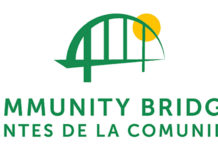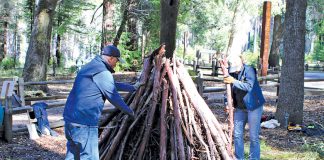Bees have been getting a lot of press lately.
Most fruits and vegetables, except crops like corn, wheat, tomatoes, peppers, eggplant, beans and beets, need bees to pollinate them.
Of the estimated 3 million bee hives in this country, about 600,000 have recently disappeared.
Our bees are at risk, and researchers have not found the smoking gun for colony collapse disorder, in which bees leave the hive and mysteriously never return.
In the 1980s, a mite caused a huge die-off, but now researchers are looking at a virus from Israel that might be causing a failure of the bees’ immune systems — like AIDS for bees.
Pesticides are contribute to the decline. Maybe the chemicals interfere with the bees’ ability to find their way home.
It might actually be that there are several reasons our bees are at risk.
As gardeners, what can we do to help?
For one, we can attract native bees to the garden. Native bees are solitary, meaning they do not build a hive, instead making nests underground. Each female lives in a nesting hole where she lays her eggs.
Some things we do in our gardens, such as mulching, are good for the soil and deter weeds but are not helpful for ground-nesting bees. The key is to leave some un-mulched sections near your flowering plants for bees to burrow.
Native bees won’t sting you. It’s not that they don’t have stingers; they just don’t use them on people. Also, most of our 1,600 species of native bees are too small to be able to sting.
Native bees are solely responsible for keeping many native plants pollinated.
To help bees and other pollinator insects — such as butterflies — you should provide a range of plants that will offer a succession of flowers, and thus pollen and nectar, through the whole growing season.
Choose several colors and shapes of flowers, plant them in clumps, and place them where bees will visit — sunny spots sheltered from strong winds.
Native bees love Ray Hartman ceanothus and toyon, for instance. Bees are also attracted to ribes, sambucus, penstemon, echinacea, sedum, salvia, California poppy, buckwheat, willow, sunflowers, lavender, basil, agastache, marjorum, rosemary, erysimum, zinnia and aster.
All species of bees will benefit from these tips. Let’s lend a helping hand to these vital pollinators.
• Jan Nelson, a California certified nursery professional at Plant Works in Ben Lomond, will answer questions about gardening in the Santa Cruz Mountains. E-mail her at ja******@*ol.com.










